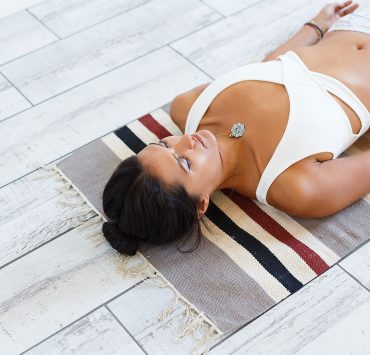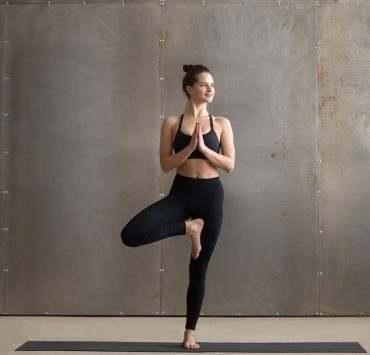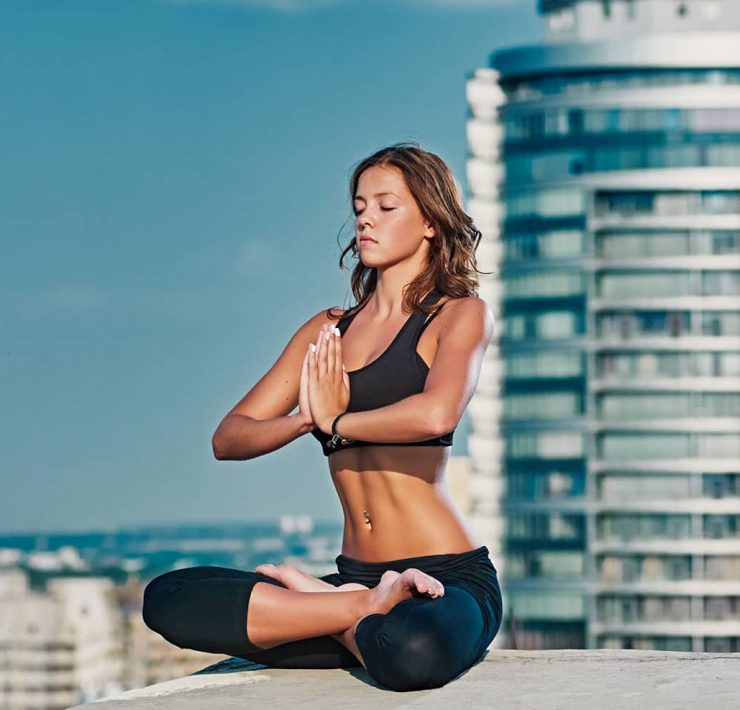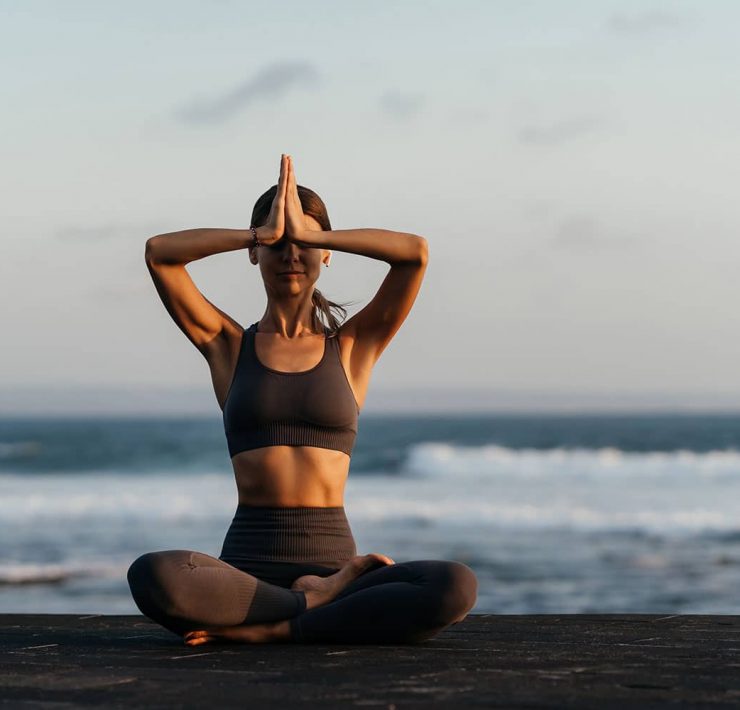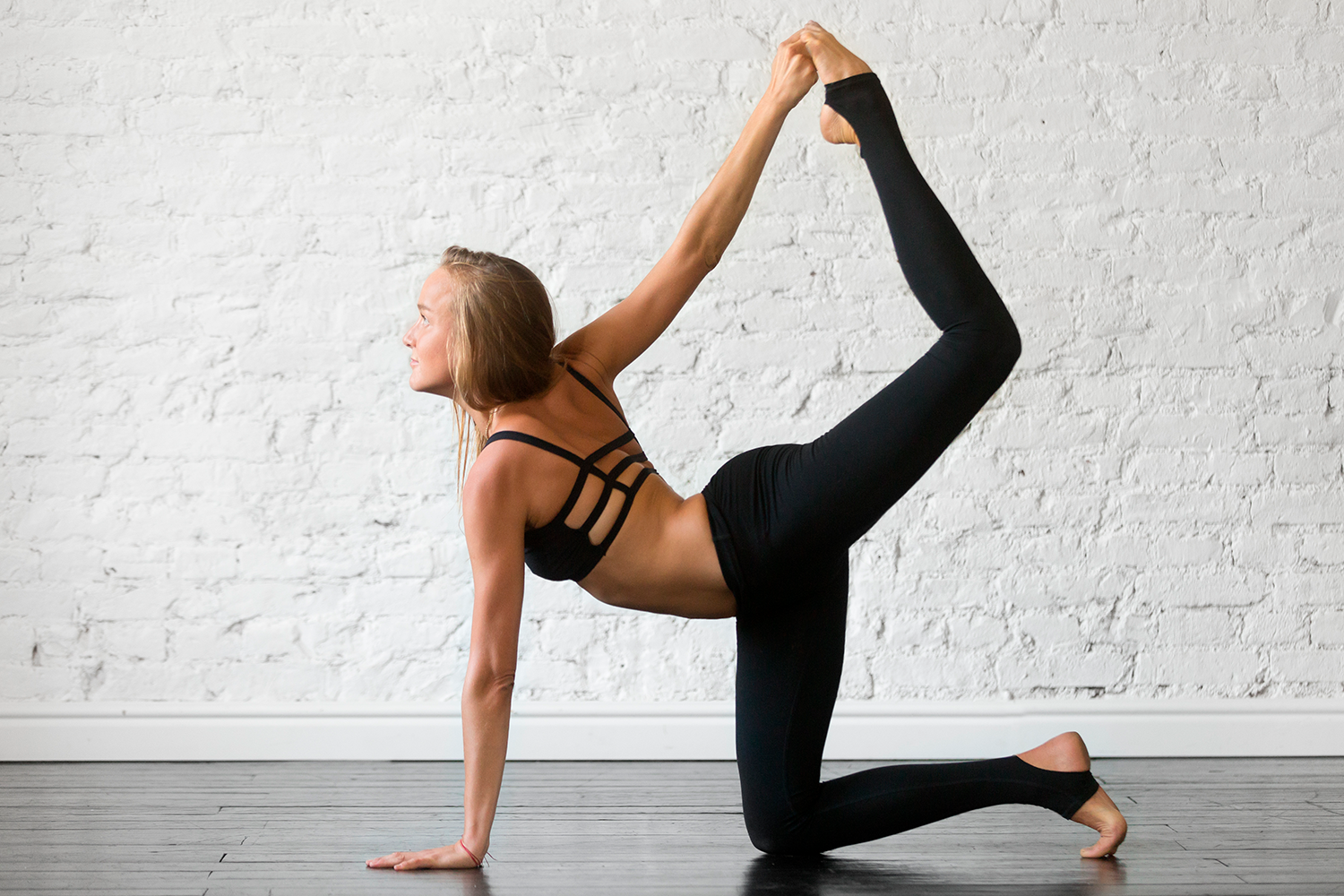
After spending nearly two decades as a relationship therapist, Patricia…
The lower back, or lumbar region, is a delicate spot for most people. It can be negatively affected by both movement and a lack of movement, making it tricky to keep happy. Although there are many possible causes, weakness in the core and poor posture are the leading contributors to pain in the lower back. Regardless, pain in this area can really put a damper on your mood and your day, so it’s essential to pinpoint the problem so you can prevent it from happening again. In most cases, some gentle yoga can help soothe tension and relax your lower back. Here’s everything you need to know about using yoga to ease that dull ache.
What Styles Of Yoga Should I Practice When I Have Lower Back Pain?

Iyengar
Iyengar emphasizes the importance of alignment, which is key to keeping protecting the lower back. Iyengar teachers are expertly trained in anatomy and guide students to stack their bones for support. This eases the aches and pains caused by overcompensation.
Restorative
Restorative yoga is excellent when you need to relax and loosen tension in all areas of the body. The postures in this practice are long-held and gentle, so the risk of worsening an injury is very minimal.
Best Poses For Lower Back Pain
Marjaryasana — Cat/Cow Pose

Why It’s Good:
Spinal waves are an excellent way to stretch the hips and the entire length of the spine. It promotes mobility and relieves tension in the back body while bringing awareness to your neutral spine.
How To:
Start in a tabletop position with shoulders over wrists and hips over knees.
While inhaling, lift your tailbone and chest towards the ceiling.
While exhaling, round your spine and drop your head toward the floor.
Continue with this fluid movement for one to three minutes.
Ardha Matsyendrasana — Half Lord of the Fishes Pose

Why It’s Good:
This twisting posture stimulates the spine and addresses pain in the lower back. It brings space to the hips, shoulders, and neck while alleviating fatigue and massaging the internal organs.
How To:
From a seated position, pull your left foot in as close to your body as possible.
Bring your right foot to the outside of your leg with the foot flat.
Inhale to lengthen your spine.
Exhale and twist towards the right, using your right hand on the floor behind you for support.
Bring your left upper arm to the outside of your right thigh.
If it feels appropriate, bring your gaze to the right.
Hold for one minute on each side.
Adho Mukha Svanasana — Downward Facing Dog Pose

Why It’s Good:
This staple posture is excellent for decompressing the entire spine. It brings space and length to the back line of the body and reduces achiness in the lower back. Downward Facing Dog addresses pain caused by tension in the legs by stretching the hamstrings and calves.
How To:
Start on your hands and knees.
Tuck your toes and bring your palms slightly forward of the shoulders.
Spread your fingers wide and begin to straighten the legs.
Lower your heels toward the ground as you tip the tailbone toward the ceiling.
Draw the shoulder blades toward the midline and actively lower them.
Let the head and neck go heavy and direct your gaze towards your belly button.
Hold for one to three minutes.
Trikonasana — Triangle Pose

Why It’s Good:
Triangle Pose is ideal for strengthening the legs, shoulders, core, and back. It can help relieve backaches, neck pain, and sciatica by stretching the spine, hips, and groin.
How To:
Start standing with your feet together.
Step your left foot back three to four feet.
Direct your left toes out at a 45-degree angle and keep your right toes pointing forward.
Lift your arms out parallel to the floor with palms down.
Shift your weight forward as you reach your right hand to the front leg or a block.
Extend your left arm straight up toward the ceiling.
Look up, forward, or down.
Hold for thirty seconds to a minute on each side.
Supta Kapotasana – Reclining Pigeon Pose

Why It’s Good:
Reclined Pigeon Pose, also known as “figure-four stretch,” brings space to the hips, glutes, and inner thighs, leading to a reduction in lower back pain.
How To:
Lie on your back.
Bend your knees and plant both feet flat.
Cross your left ankle over your right leg just above the knee.
Flex your left foot.
Grab ahold of your right thigh or shin and gently pull it toward your chest.
Hold for one to three minutes on each side.
Salamba Bhujangasana — Sphinx Pose

Why It’s Good:
Sphinx pose compliments the natural curve of or spine and provides a gentle backbend without overexertion. It also works the core, which aids in supporting the lower back.
How To:
Lie flat on your belly with legs together.
Draw your elbows under your shoulders and plant the forearms down parallel to each other.
As you inhale, isometrically pull your elbows toward you while lifting the chest from the floor.
Root your hips and thighs down while lengthening the spine and relaxing the shoulders.
Hold for one to three minutes.
Bhujangasana — Cobra Pose

Why It’s Good:
This mild backbend stretches the abdominal muscles, chest, and shoulders while strengthening the spine. It also helps to soothe sciatica, relieves stress, and combats fatigue.
How To:
Lie on your belly.
Bring your hands under your shoulders with fingers spread wide.
Draw your arms in toward your body.
Press into your hands and inhale to slowly lift your head, chest, and shoulders off the floor.
Keep a slight bend in the elbows as you reach your crown toward the ceiling.
Hold for thirty seconds before slowly releasing to the mat.
Balasana — Child’s Pose

Why It’s Good:
Child’s Pose helps take some of the pressure off the lower back by stretching and straightening the spine. It’s a very restorative posture that helps bring space and awareness to the back body.
How To:
Start kneeling with knees hip-width and big toes touching.
As you inhale, think about filling the back with air.
As you exhale, walk your fingertips forward and rest your torso over your thighs.
Rest your forehead on the ground.
Hold for one to three minutes.
Poses To Avoid or Modify When You Have Lower Back Pain
Ustrasana — Camel Pose

Reason:
Camel Pose is useful for stretching the front line of the body, but it puts a lot of pressure on the lower back. For this reason, it’s better to avoid this posture when you’re dealing with lower back pain.
Modification:
If you’re determined to practice Camel Pose, use your hands to support your lower back as you ease into it. Keep your hands here and enjoy the stretch in the abdominals and chest. If it feels okay, place blocks on their highest setting outside the ankles for your hands to rest.
Urdhva Dhanurasana — Full Wheel Pose

Reason:
This posture is an advanced backbend that requires a lot of strength and flexibility. It’s not suited to beginners, or even some intermediate students, and should always be practiced with caution. Regardless of experience level, all yogis should steer clear of this pose if they have back issues because it puts extra pressure on the spine.
Modification:
Instead of taking your backbend to new heights, try modifying with Half Wheel Pose or Supported Bridge Pose. You’ll still get a heart-opening backbend without the risk of injury.
Paripurna Navasana — Boat Pose

Reason:
Although Boat Pose is an effective way to engage the core, it also causes you to tilt the lumbar spine in a manner that can worsen back issues.
Modification:
Modify this pose by tucking your pelvis rather than tilting it outward. Keep the knees bent with the shins parallel to the floor, and perhaps use your hands on the floor for extra support.
Sarvangasana — Shoulder Stand Pose

Reason:
Shoulderstand isn’t advised for those with sensitivity in the lower back or neck as it tends to put a dangerous amount of pressure on those areas when performed incorrectly. When done correctly, it can help strengthen the core and upper body, but those with weakness in the core and shoulders tend to compensate in ways that place strain on the neck and back.
Modification:
If you’re looking for a mild inversion that won’t exacerbate your lower back pain, try Waterfall Pose. Lying on your back, bring a block under the sacrum and send your legs toward the ceiling.
Paschimottanasana — Seated Forward Bend Pose

Reason:
This posture can be very therapeutic for the calves and hamstrings; however, people tend to round their spine which creates the risk of pinched nerves. This intensifies any lower back pain, especially for those with disk issues.
Modification:
For a similar hamstring and calf stretch, try a standing forward fold instead. This variation allows you to keep the back flat and reduces the incidence of pinched nerves.
Parivṛtta Anjaneyasana — Twisted High Lunge Pose

Reason:
Bulging discs in the lower back or issues with transferring weight are good reasons to stay away from twisting postures. They put a lot of pressure on the discs as people tend to go deeper than their bodies can comfortably tolerate.
Modification:
If you need the detoxifying powers of a twist, try a simple seated variation and use your abdominals to initiate the movement.
Golden Rules
Avoid slumping or rounding the spine to maintain your natural lumbar curve.
Strengthen the back body by practicing healthier sitting and standing postures.
Don’t let the feet turn out while walking or sitting – Try your best to keep them parallel.
Rise up from forward folds with knees slightly bent and an engaged pelvic floor.
Continue to strengthen the core to support the lower back.
What's Your Reaction?
After spending nearly two decades as a relationship therapist, Patricia journeyed down the path of writing as a vehicle for sharing her wisdom. Her work reflects a sincere interest in readers’ wellbeing and is abundant with helpful advice and fascinating insight.






